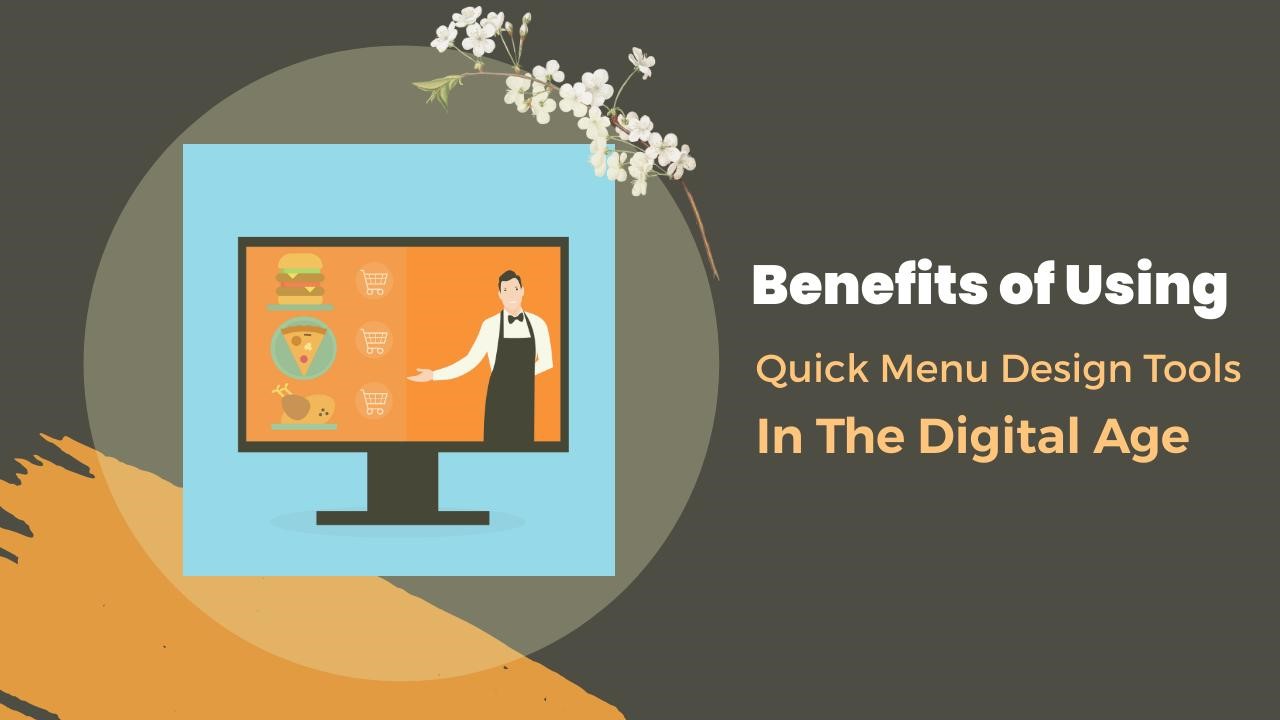In today’s fast-paced digital landscape, businesses are constantly seeking ways to stand out amidst fierce competition. One of the key elements that significantly impacts a customer’s first impression is the menu design. Whether it’s a restaurant, cafe, or any food-related establishment, an appealing and well-structured menu can make a world of difference. Quick menu design tools have emerged as game-changers in this regard, offering a plethora of benefits that streamline the process and elevate the overall customer experience.
1. Enhancing Visual Appeal
The Power of Visuals
Human beings are highly visual creatures, and the visual appeal of a menu plays a pivotal role in capturing attention and driving engagement. Quick menu design tools empower businesses to create visually stunning menus effortlessly. From vibrant imagery of tantalizing dishes to elegant typography and layout, this free online menu maker provides a platform to craft menus that not only showcase offerings but also evoke desired emotions and cravings.
2. Flexibility and Customization
Tailored to Perfection
The beauty of quick menu design tools lies in their flexibility and customization options. Businesses can unleash their creativity and align the menu design with their brand identity seamlessly. Whether it’s adjusting colors, fonts, or layouts, these tools offer a myriad of choices, allowing businesses to tailor menus according to their unique preferences and themes. Additionally, the ability to make instant changes ensures menus stay up-to-date with seasonal offerings or pricing modifications.
3. Time and Cost Efficiency
Streamlining Processes
Traditionally, creating a visually appealing menu requires substantial time, resources, and design expertise. Quick menu design tools revolutionize this process by offering user-friendly interfaces and pre-designed templates. This not only saves time but also significantly reduces costs associated with hiring professional designers. Business owners and managers can swiftly design, modify, and update menus in-house, eliminating the need for outsourcing and long waiting periods.
4. Seamless Integration and Accessibility
Adapting to the Digital Era
With the digital age in full swing, online presence is paramount for businesses. Quick menu design tools often come with features that facilitate easy integration with websites and social media platforms. This seamless integration ensures that updated menus are readily available to customers across various digital touchpoints. Moreover, the accessibility factor allows for instant sharing through email campaigns or QR codes, enhancing reach and engagement.
5. Improved Customer Experience
Impacting Decision-Making
A well-designed menu isn’t just about aesthetics; it significantly impacts the customer’s decision-making process. Quick menu design tools enable businesses to arrange and present items in a visually appealing and intuitive manner. Strategic placement, enticing visuals, and clear descriptions can influence customers’ choices, leading to increased orders and customer satisfaction.
6. Enhanced Brand Consistency
Maintaining Cohesion
Consistency is key in establishing a strong brand identity. Quick menu design tools facilitate the creation of menus that seamlessly align with a brand’s overarching aesthetic. From color schemes to typography and logo placement, these tools enable businesses to maintain uniformity across all marketing collateral, reinforcing brand recognition and loyalty among customers.
7. Data-Driven Decision Making
Insights for Optimization
Quick menu design tools often come equipped with analytics features that provide valuable insights into customer behavior. By tracking menu interactions and popular items, businesses gain actionable data to optimize menus for better performance. These analytics-driven decisions can lead to menu improvements, highlighting top-selling items, and adjusting pricing strategies, ultimately enhancing profitability.
8. Adaptability to Market Trends
Staying Relevant
The food industry is dynamic, with trends and consumer preferences constantly evolving. Quick menu design tools empower businesses to swiftly adapt to changing trends. Whether it’s incorporating seasonal menus, introducing new items, or adjusting menu layouts to reflect current market demands, these tools offer agility and responsiveness, keeping businesses ahead in the competitive landscape.
9. Accessibility and Inclusivity
Catering to Diverse Needs
Accessibility is a crucial aspect often overlooked in menu design. Quick menu design tools enable businesses to create menus that cater to diverse customer needs, including those with dietary restrictions or accessibility requirements. Clear labeling, icons denoting allergens, and customizable options ensure that menus are inclusive, accommodating a wide range of preferences and dietary considerations.
Conclusion
Quick menu design tools have become indispensable assets for businesses aiming to thrive in the digital age. From enhancing visual appeal and customization to streamlining processes and improving customer experiences, these tools offer a myriad of benefits. Embracing these tools empowers businesses to craft captivating menus that leave a lasting impression on customers, ultimately driving success in a highly competitive market.
